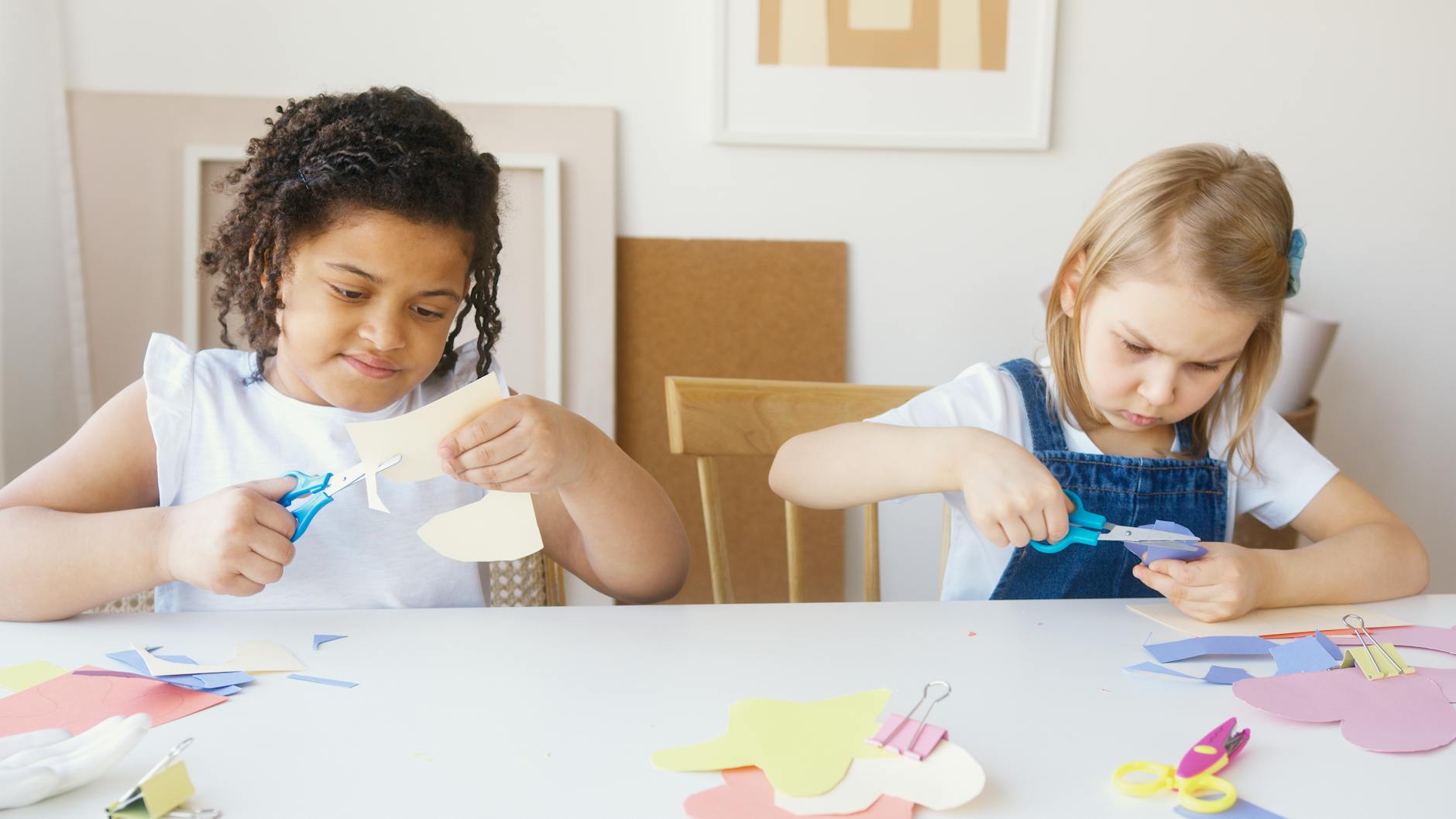Welcome to the musicality playground! Ever wonder how some piano players can make a simple melody sound like a masterpiece? It’s all about adding expression and emotion. Now, you might be thinking, “Isn’t that what I’m supposed to do when I play the piano?” Well, sure. But there’s a big difference between playing notes on a page and making those notes come alive with feeling. So, buckle up. It’s time to dive into the world of musicality and discover how to add that extra sparkle to your piano playing.
The Importance of Musicality in Piano Playing
Understanding Musicality
Welcome to the fascinating world of musicality! Have you ever wondered what sets apart a good pianist from a great one? It’s not just about playing the right notes or having flawless technique. It’s about adding that extra something, that touch of magic that brings a piece of music to life. That’s where musicality comes in.
Musicality can be described as the ability to interpret and convey the emotions and intentions of a musical piece. It’s about going beyond the surface and delving into the heart and soul of the music. It’s what captivates the listener and makes their heart skip a beat. So, how can you develop this elusive quality in your piano playing? Let’s explore further!
The Role of Expression and Emotion in Piano Playing
 Two Kids Doing Some Artworks (Photo by Artem Podrez)
Two Kids Doing Some Artworks (Photo by Artem Podrez)
Expression and emotion are the very essence of music. They are what make a simple collection of notes transform into a captivating melody that can move us to tears or fill us with joy. As a pianist, it is your role to channel these emotions through your playing and share them with your audience.
Think of it this way: playing the piano without expression and emotion is like reading a book out loud in a monotone voice. Sure, the words are there, but they lack the depth and meaning that can truly engage the listener. By infusing your playing with expression and emotion, you breathe life into the music and create a connection with your audience.
So, how can you add expression and emotion to your piano playing? Here are a few tips to get you started:
- Listen to the masters: Take the time to explore recordings of renowned pianists. Observe how they bring out the nuances of each piece, how they shape phrases, and how they use dynamics to convey emotion. Let their performances inspire and guide you on your own musical journey.
- Study the score: Dive deep into the musical score. Look for indications of dynamics, articulations, and phrasing. Understand the composer’s intentions and try to bring them to life through your playing. Don’t just play the notes; tell a story.
- Experiment with different interpretations: Don’t be afraid to experiment and put your own spin on a piece. Music is a form of self-expression, so let your personality shine through. Try different tempos, dynamics, and articulations, and see how they affect the overall mood of the piece.
- Connect with the music: To truly convey emotion, you need to connect with the music on a personal level. Take a moment before you start playing to immerse yourself in the piece. Close your eyes, feel the music in your soul, and let it guide your fingers on the keys.
Remember, musicality is not something that can be learned overnight. It takes time, practice, and a genuine love for music. But with dedication and perseverance, you can unlock the power of musicality and take your piano playing to new heights.
So, go ahead, embrace the magic of musicality and let your piano playing soar!
Mastering Musicality: How to Add Expression and Emotion to Your Piano Playing
Developing a Strong Foundation
Have you ever listened to a pianist who effortlessly expresses their emotions through their playing? They seem to have a magical ability to bring the music to life, captivating your heart and soul. You might be wondering, how can I achieve that level of musicality? Well, my fellow pianists, the secret lies in developing a strong foundation. In this article section, we will explore two key aspects of building this foundation: mastering technique and understanding music theory for emotional expression.
Mastering Technique
 Young Cute Boy Playing Piano (Photo by Mikhail Nilov)
Young Cute Boy Playing Piano (Photo by Mikhail Nilov)
Before you can truly express yourself through the piano, it is essential to master the technical aspects of playing. Think of technique as the language of the piano – the better you understand it, the more fluently you can communicate your emotions.
- Practice Makes Perfect: Like any skill, mastering technique requires dedicated practice. Set aside regular practice sessions, focusing on exercises that target finger dexterity, hand coordination, and control. Remember, slow and steady wins the race!
- Posture and Ergonomics: Imagine trying to run a marathon with poor posture. It would be challenging, right? The same principle applies to piano playing. Maintain a relaxed yet upright posture, ensuring your wrists are level with the keys. This will enhance your control and prevent unnecessary tension.
- Dynamic Range: Don’t be afraid to explore the full range of dynamics on the piano – from delicate pianissimos to thunderous fortissimos. Experiment with touch and pressure, allowing your fingers to dance effortlessly across the keys.
Music Theory for Emotional Expression
 Close-Up Photo of Cassette Tape (Photo by Dmitry Demidov)
Close-Up Photo of Cassette Tape (Photo by Dmitry Demidov)
Now that your technique is on point, let’s delve into the realm of music theory. Understanding the emotional content of the music you play will unlock doors to expressive playing like never before.
- Emotional Resonance: Each musical element, be it melody, harmony, or rhythm, has the power to evoke specific emotions in the listener. Dive deep into the theory behind these elements, exploring how they can be combined and manipulated to create emotional journeys within your playing.
- Interpretation: Just as a painter adds brushstrokes to a canvas, a musician adds their interpretation to a piece of music. Think of yourself as a storyteller, conveying the composer’s message through your unique lens. Experiment with different phrasing, dynamics, and articulations to breathe life into the music.
- Listening and Analyzing: Train your ears to recognize the nuances and subtleties within a piece of music. Study recordings of renowned pianists, analyzing their expressive techniques. Listen to a variety of genres and styles, expanding your musical vocabulary and inspiring new ways to convey emotions.
Remember, developing a strong foundation is a journey that requires patience and dedication. As you master technique and delve deeper into music theory, you will find yourself unlocking new levels of expression and emotion in your piano playing. So, embark on this musical adventure with confidence, and let your fingers paint the world with the colors of your soul!
Cultivating Emotional Awareness
Connecting with the Music
 Brown Upright Piano (Photo by Juan Pablo Serrano Arenas)
Brown Upright Piano (Photo by Juan Pablo Serrano Arenas)
Have you ever listened to a piece of music and felt a rush of emotions? Maybe it made you feel joyful, melancholic, or even nostalgic. Music has a powerful way of evoking emotions, and as a pianist, it is important to connect with the music on a deeper level. By doing so, you can add a rich layer of emotional expression to your piano playing.
But how do you go about connecting with the music? It starts with active listening. Take the time to really listen to the piece you are playing. Pay attention to the dynamics, the phrasing, and the overall mood of the music. Try to imagine the story that the music is telling and immerse yourself in its world.
Additionally, try to put yourself in the shoes of the composer. Understand their intentions, the emotions they were trying to convey through their music. This will help you establish a connection with the piece and enable you to bring out its true essence in your playing.
Developing an Emotional Vocabulary
 Adult frowned male writer working on typewriter at home (Photo by Andrea Piacquadio)
Adult frowned male writer working on typewriter at home (Photo by Andrea Piacquadio)
Just as a writer needs a rich vocabulary to effectively convey their thoughts and emotions, a pianist needs an emotional vocabulary to express the range of feelings present in a musical piece. Developing this emotional vocabulary involves expanding your understanding of emotions and finding ways to translate them into your playing.
One way to do this is by exploring music theory and understanding how different musical elements contribute to emotional expression. For example, learning about the impact of tempo, dynamics, and articulation on the mood of a piece can help you convey specific emotions more effectively.
Another way to develop your emotional vocabulary is by studying other musicians who excel at expressing emotions through their playing. Listen to recordings by renowned pianists and pay attention to how they interpret different pieces. Observe their use of dynamics, phrasing, and timing to convey specific emotions.
Furthermore, don’t be afraid to experiment and take risks in your playing. Emotions are complex and multi-dimensional, so allow yourself to explore different interpretations and find your own unique way of expressing them through your music.
By connecting with the music and developing an emotional vocabulary, you will be able to add a new level of expression and emotion to your piano playing. So, the next time you sit down at the piano, remember to truly listen, immerse yourself in the music, and let your emotions guide your fingers. Happy playing!
Related website: Music Theory Guide
Related website: Famous Pianists and Their Interpretations
Related website: How to Use Dynamics in Piano Playing
Mastering Musicality: How to Add Expression and Emotion to Your Piano Playing
Adding Expression to Your Playing
Playing the piano is not just about hitting the right notes; it’s about conveying emotions and telling a story through music. To truly master musicality, you need to add expression to your playing. In this section, we will explore three essential elements that can help you infuse your piano playing with depth and emotion: dynamics, articulation and phrasing, and tempo and timing.
Dynamics: Bringing Life to Your Music
Dynamics refer to the variation in volume or intensity of the music. By incorporating dynamics into your playing, you can create a sense of contrast and highlight the different emotions within a piece. Imagine playing a soft, delicate melody that gradually builds up to a powerful crescendo. The contrast between the soft and loud sections adds drama and impact to the music, capturing the listener’s attention and evoking a range of emotions.
 Free stock photo of adult, fun, grass (Photo by Siarhei Dalivelia)
Free stock photo of adult, fun, grass (Photo by Siarhei Dalivelia)
To enhance your understanding of dynamics, explore websites such as PianoCareer.com that offer valuable insights and techniques for effectively incorporating dynamics into your piano playing.
Articulation and Phrasing: Shaping Your Musical Sentences
Articulation and phrasing are the building blocks that shape your musical sentences. Articulation refers to how each note is played, while phrasing focuses on the way notes are connected to form coherent musical phrases. By mastering both of these elements, you can bring clarity and expressiveness to your piano playing.
Think of articulation as the punctuation marks in your musical sentences. Just as commas, periods, and exclamation marks guide the reader through a piece of writing, articulation marks such as staccatos, legatos, and accents guide the listener through your music. They add flavor and character to each note, making your playing more engaging and compelling.
 Free stock photo of adult, fun, grass (Photo by Siarhei Dalivelia)
Free stock photo of adult, fun, grass (Photo by Siarhei Dalivelia)
Phrasing, on the other hand, is like the flow and structure of your sentences. It involves understanding the musical syntax and grouping notes in a way that creates meaningful musical phrases. By shaping your phrases with care, you can create a sense of storytelling and evoke different emotions in your audience.
For further guidance on articulation and phrasing techniques, check out PianoPlayIt.com, where you can find helpful resources and tutorials.
Tempo and Timing: Setting the Mood
Tempo and timing are crucial elements that influence the overall mood and feel of your piano performance. Tempo refers to the speed at which a piece of music is played, while timing relates to how you navigate the rhythm and pulse of the music.
Choosing the right tempo is essential for capturing the intended mood of a composition. A slow tempo can convey introspection and melancholy, while a faster tempo can create a sense of excitement and energy. Experiment with different tempos to find the one that best suits the emotions you want to convey.
 Side view of positive black boy tickling girl belly at bright home wearing casual outfits near piano and potted plants with green leaves (Photo by Marta Wave)
Side view of positive black boy tickling girl belly at bright home wearing casual outfits near piano and potted plants with green leaves (Photo by Marta Wave)
Timing, on the other hand, involves the precise execution and synchronization of notes and rests. By mastering timing, you can create a sense of groove and flow in your playing, making it more engaging and enjoyable for both you and your audience.
To delve deeper into the world of tempo and timing, visit MusicTheory.net, where you can find valuable resources and exercises to improve your sense of timing and understanding of tempo.
Incorporating dynamics, articulation and phrasing, and tempo and timing into your piano playing will elevate your musicality and add a new dimension of expression to your performances. Experiment with these elements, explore different techniques, and let your emotions guide your playing. Remember, the piano is not just an instrument; it’s a powerful tool for storytelling and connecting with your audience.
Mastering Musicality: How to Add Expression and Emotion to Your Piano Playing
Conveying Emotion through Interpretation
Analyzing the Composition
When it comes to conveying emotion through piano playing, it all starts with a deep understanding of the composition. By analyzing the piece you are playing, you can uncover the composer’s intentions and the emotions they aimed to evoke. Take the time to study the sheet music, paying attention to the dynamics, tempo markings, and phrasing. This thorough examination will provide you with insights into the overall mood and structure of the piece.
But don’t stop there! Dive deeper into the historical and cultural context of the composition. Learn about the composer’s life and the circumstances in which the piece was written. This knowledge will give you a broader perspective and help you connect with the emotions embedded within the music.
To truly master musicality, embrace the role of a musical detective, peering into the composition’s intricacies and unraveling its emotional secrets. Remember, the more you understand the composition, the better equipped you will be to convey its intended emotion.
The Power of Personal Interpretation
Once you have analyzed the composition, it’s time to unleash your own personal interpretation. This is where you can truly shine as a pianist and add your unique emotional touch to the music. Think of yourself as a storyteller, using your piano as the medium through which you convey the narrative.
Let your emotions guide your playing. Allow yourself to feel the music deeply, and let that emotion flow through your fingertips onto the keys. Each note, each phrase should be infused with your own interpretation, reflecting your emotional response to the composition.
Remember, there is no right or wrong when it comes to personal interpretation. It is your individuality that makes your playing special. Take risks, experiment with dynamics, explore different tempos, and use rubato to enhance the emotional impact of the music. Your interpretation should reflect your own emotional journey as you bring the composition to life.
So go ahead, embrace the power of personal interpretation and let your emotions soar through your piano playing!
 A Woman Playing an Electronic Keyboard in a Band (Photo by Big Bag Films)
A Woman Playing an Electronic Keyboard in a Band (Photo by Big Bag Films)
By analyzing the composition and adding your personal interpretation, you can elevate your piano playing to new emotional heights. The combination of understanding the composer’s intentions and infusing your own emotions into the music will captivate your audience and create a truly memorable musical experience.
Remember, when it comes to conveying emotion through interpretation, it’s all about immersing yourself in the composition and allowing your unique voice to shine. So, let your heart guide your fingers as you paint a musical masterpiece full of expression and emotion!
Mastering Musicality: How to Add Expression and Emotion to Your Piano Playing
Connecting with Your Audience
As a pianist, connecting with your audience is essential for creating a memorable and impactful performance. It goes beyond simply playing the right notes; it involves developing stage presence and effectively communicating emotion through your music. In this section, we will explore how you can enhance your connection with the audience by focusing on two key aspects: developing stage presence and communicating emotion.
Developing Stage Presence
Stage presence is the ability to captivate and engage your audience through your physical and emotional presence on stage. It is a combination of confidence, charisma, and authenticity. When you step onto the stage, you want to create an atmosphere that draws the audience in and makes them feel a part of the performance.
To develop your stage presence, here are some tips to consider:
- Body Language: Stand tall, maintain good posture, and use your body to express the music. Allow your movements to be natural and fluid, reflecting the emotions conveyed in the piece.
- Eye Contact: Connect with the audience by making eye contact. This establishes a personal connection and helps to establish trust and engagement.
- Engage with the Space: Utilize the entire stage, moving around when appropriate. This adds dynamic visual interest and allows the audience to follow your musical journey.
- Interact with the Audience: Acknowledge the presence of the audience through gestures, smiles, and occasional verbal interactions. This creates a sense of connection and shared experience.
Remember, developing stage presence takes time and practice. Embrace the opportunity to perform in front of others, whether it’s in a small gathering or a larger concert hall. Each experience will contribute to your growth as a performer.
Communicating Emotion
Music has the power to evoke a wide range of emotions, and as a pianist, it is your role to effectively communicate these emotions to your audience. By infusing your playing with genuine emotion, you can create a profound impact and touch the hearts of those listening.
Here are some strategies to help you communicate emotion through your piano playing:
- Understand the Music: Dive deep into the composition, studying its historical context, the composer’s intentions, and the emotions it aims to convey. This understanding will guide your interpretation and help you communicate the intended emotions effectively.
- Dynamic Range: Master the art of dynamics, varying the volume and intensity of your playing. This allows you to create contrasting emotions and build suspense or release in your performance.
- Tonal Expressiveness: Explore the different tonal colors your piano can produce. Experiment with touch, articulation, and pedal techniques to add nuance and depth to your playing, enhancing the emotional impact.
- Personal Connection: Find your own emotional connection to the music. Reflect on personal experiences or memories that resonate with the emotions portrayed in the piece. This authenticity will shine through in your performance, making it relatable and heartfelt.
Remember, every performance is an opportunity to connect with your audience on an emotional level. By developing your stage presence and effectively communicating the intended emotions, you can create a profound and memorable musical experience.
 Man Playing a Guitar While Singing (Photo by ANTONI SHKRABA production)
Man Playing a Guitar While Singing (Photo by ANTONI SHKRABA production)
 People in Concert (Photo by Sebastian Ervi)
People in Concert (Photo by Sebastian Ervi)
Conclusion
In conclusion, mastering musicality is a journey that takes time, patience, and a whole lot of heart. By adding expression and emotion to your piano playing, you can truly bring your music to life and captivate your audience. Remember to pay attention to dynamics, phrasing, and tone, allowing each note to speak volumes and convey the story you wish to tell. Don’t be afraid to experiment and explore different techniques to find your own unique musical voice. So go ahead, tickle those ivories, let your emotions flow, and watch as your piano playing reaches new heights. Happy playing!
